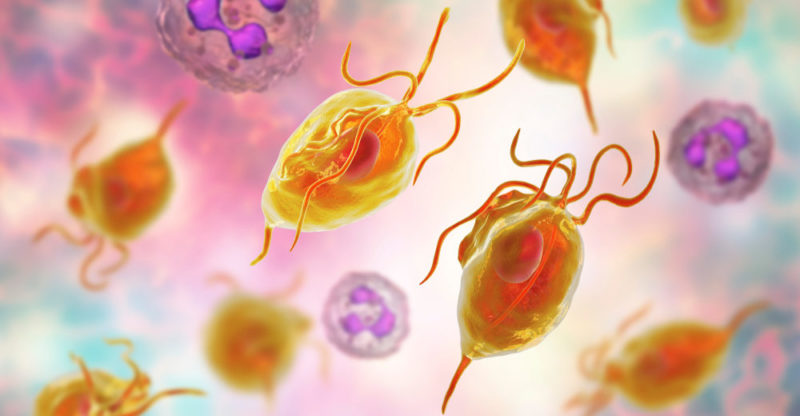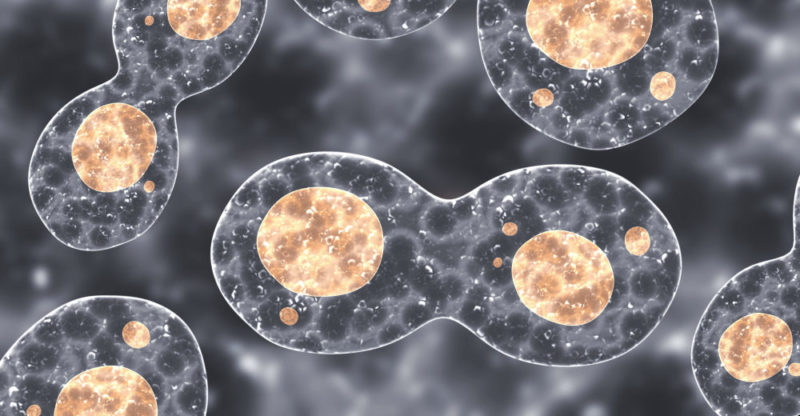We explain what protozoa are, how they originated and their classification. Also, what are its characteristics, examples and more.
What are the Protozoa?
It is known as protozoa or protozoa to a group of microscopic organisms that inhabit humid environments or aquatic environments, which in some biological classification systems form their own kingdom : Protozoa, which is considered as the first evolutionary step in the world of beings. eukaryotes, earlier than animals , plants , fungi , and algae .
According to other, more traditional classifications, protozoa would be mostly unicellular and very primitive animals : they are heterotrophs (their metabolism depends on consuming organic matter) and they are endowed with movement and reproductive capacity. However, these classifications are still open to debate.
Most protozoa can be seen under a microscope , as their size ranges from 10 to 50 micrometers. About 300,000 species of them have been registered, distributed in the various rungs of the food chain: herbivores, decomposers, predators and even parasites.
Origin of the protozoa

Protozoa are estimated to be about 1.63 billion years old on earth , from the Mesoproterozoic period. Its evolutionary origin coincides with that of the first eukaryotic cell , that is, with a defined nucleus, and the inauguration of a whole category of living beings from then on: the eukaryotes.
There are various theories to explain this passage from the prokaryotic to the eukaryotic world, one of the most accepted being that of the symbiotic coexistence between an archaea and a parasitic cell , later symbiotic, which became a single organism.
The appearance of the first unicellular organism endowed with cytoplasmic structures and external structures to mobilize represented a gigantic evolutionary leap in biological matter.
Etymology of the term Protozoa
The name “protozoan” comes from the Greek protos (“first”) and zoo (“animal”) , and was coined by George Gold fuss in 1818, to name what he supposed were the primitive animals. This type of living beings had already been observed by Leeuwenhoek in 1674, using self-made microscopes.
Classification of protozoa

According to the traditional classification, protozoa can be of the following types:
- Rhizopods. They are characterized by moving through pseudopods, that is, forming "fingers" with the cytoplasm and the plasma membrane that project forward. These projections are also used to capture food and introduce it into the cytoplasm, in a process called phagocytosis.
- Ciliates. Its plasma membrane is surrounded by cilia, that is, similar filaments but smaller and more numerous than the flagella, which serve to mobilize the cell .
- Flagellates. They are equipped with one or more flagella, that is, "tails" that allow the cell to be propelled and mobilized.
- Sporozoa. They are parasites, lacking mobility but that have a multiple division phase known as sporulation, and that are the cause of diseases, such as malaria.
Habitat of Protozoa
Protozoa require wet or directly aquatic environments to survive, and this can occur in two conditions:
- free-living protozoa. Those that live in stagnant or residual waters, in rivers or in other natural spaces and are generally harmless to humans, except in very specific conditions.
- pathogenic protozoa. Those that must infect or penetrate the bodies of more complex beings to fulfill their life cycle, and that make their habitat in, for example, in the intestines of man, in his blood , etc. In some cases they can also be commensals, not just parasites.
Reproduction of Protozoa

Protozoa reproduce abundantly, a key condition for their biological and evolutionary success. This process can occur both sexually or asexually , depending on the conditions of the environment, through various processes:
- Binary division (asexual). The well-known "mitosis", in which a cell divides into two and replicates itself.
- Budding (asexual). The protozoan generates a copy of itself in a sturdy structure that stays with itself and can survive it through difficult periods, only to reactivate itself and bring back to life an identical copy to the original.
- Sporulation (asexual). The original cell fragments into a set of spores, resistant to climatic changes, which will later give rise to entire individuals.
- Meiosis (sexual). Protozoa generate gametes or microgametes that allow the formation of a zygote by uniting the genetic material of two parents and thus obtaining a greater genetic richness, to later generate a new original individual. This process is usually carried out in periods of abundant resources.
Protozoan Metabolism
Protozoa also respire, except for a few capable of chemosynthesis or photosynthesis (they are usually considered chromists ). In fact, their breathing is aerobic (they require oxygen ) and they are particularly sensitive to the lack of this element.
Feeding of protozoa

As has already been said, they can be predators, herbivores or cellular detritófagos , since they require the consumption of organic matter to be able to breathe and grow. Their "diet" usually consists of bacteria , other protists, or microscopic debris from other processes.
Structure of Protozoa
Protozoa are "naked" cells, without a cell wall or exoskeleton , which makes them very flexible and adaptable. They are generally unicellular, although there are cases of more complex, multicellular protozoa, but without ever composing a true organic tissue.
Diseases caused by protozoa

Some protozoa are harmful to man and have adapted to the conditions of his body, thus being able to parasitize him and cause diseases, such as:
- Malaria. Also known as malaria, it is caused by a group of parasitic protozoa of the genus Plasmodium , and is recognized by high fevers, chills, sweating, headache, and can also lead to nausea, cough, bloody stools, muscle aches, jaundice, and worsening with shock, kidney or liver damage, and death.
- Amebiasis. A common intestinal infection, due to the presence of pathogenic amoebae in the intestine or digestive tract, which "upholster" the intestinal wall, making it difficult to absorb nutrients and causing diarrhea and other damage.
- Toxoplasmosis. Caused by toxoplasma, a protozoan that is transmitted to humans through contact with infected cats and other felines, or through contact with infected animal or human feces. Its symptoms are disguised as the flu, although it can also swell the lymph nodes, the spleen, the liver and cysts in the tissues.
Examples of Protozoa
Some common protozoa are: the amoeba (amoeba), the paramecium, the euglena, the blepharisma, the intestinal parasite Giardia or the famous plasmodium of malaria.
The above content published at Collaborative Research Group is for informational and educational purposes only and has been developed by referring to reliable sources and recommendations from technology experts. We do not have any contact with official entities nor do we intend to replace the information that they emit.
MA student of the TransAtlantic Masters program at UNC-Chapel Hill. Political Science with a focus on European Studies. Expressed ideas are open to revision. He not only covers Technical articles but also has skills in the fields of SEO, graphics, web development and coding. .
Leave a reply
Your email address will not be published. Required fields are marked *Recent post

Sport: What Is It, Types, Risks, Features, Characteristics and Examples

Dogs: Emergence, Features, Characteristics, Feeding and Breeds

Story: Definition, Elements, Structure, Features and Characteristics

